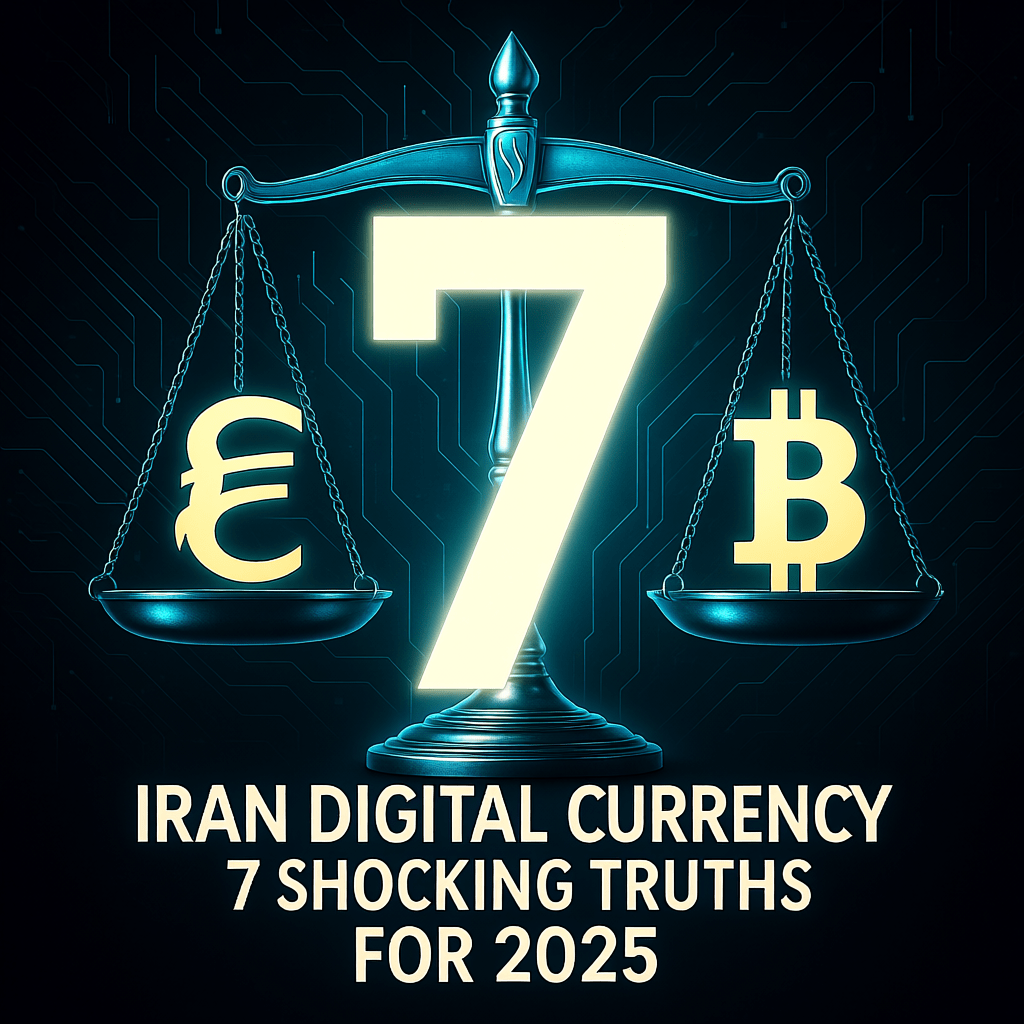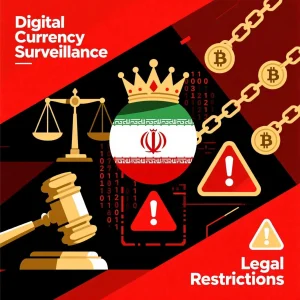
Iran Digital Currency Law: 7 Shocking Truths for 2025
Published: August 21, 2025 | Last Updated: August 21, 2025
Author: Gathered by Unitribune content team
“Beyond the headlines, the Iranian digital currency law establishes a controlled economic ecosystem, creating clear winners and losers while fundamentally altering the meaning of financial privacy in the nation.”

The 2025 regulations introduce a complex system with significant consequences for individuals and businesses.
The 7 Core Truths of Iran’s New Crypto Legislation
To truly understand what this means for you, we must look past the simple announcement. Here are the seven most important realities of the new Iran digital currency law.
Truth #1: Private Crypto is Legal, But You Can’t Use It for Shopping
The law legalizes the holding of private cryptocurrencies like Bitcoin. However, it explicitly prohibits their use for domestic payments. This means you cannot use crypto to buy coffee, pay bills, or conduct any daily transactions inside Iran.
This rule is designed to protect the sovereignty of the Iranian Rial. The only digital currency for domestic use will be the state-issued Digital Rial. This truth from the Iran digital currency law confirms a strict separation of assets.
Truth #2: The “Digital Rial” Means Less Financial Privacy
The law’s centerpiece is the Central Bank Digital Currency (CBDC), or “Digital Rial.” Unlike decentralized crypto, this is a centralized tool. Every transaction will be recorded on a government-controlled ledger.
This gives the Central Bank of Iran unprecedented visibility into citizen spending habits. While it can improve payment efficiency, it comes at the cost of the financial privacy many associate with digital cash. This is a critical trade-off.
Truth #3: Crypto Mining is Now a State-Controlled Industry
Crypto mining is officially recognized as a legal industry, a positive step for miners. However, the catch is significant. All miners must obtain a license and, most importantly, sell their mined assets directly to the Central Bank of Iran.
This effectively turns private miners into contractors for the state. The goal is to build up national foreign currency reserves to pay for imports. The era of independent mining for personal profit is over under this new regulation.
Truth #4: The Law is a Direct Weapon Against Economic Sanctions
A key motivation for the Iran digital currency law is to create a financial bypass. The regulations explicitly allow licensed businesses to use cryptocurrencies (bought from the CBI) to pay for imported goods. This creates a channel for international trade that exists outside traditional banking systems like SWIFT. This is a strategic move on the global economic stage.
Truth #5: A Risky Investment “Grey Market” is Now Solidified
Since you can hold crypto but not spend it domestically, a strange market dynamic is created. Citizens can legally own a speculative asset but have limited legal ways to liquidate it for local currency. This may push many towards unregulated peer-to-peer exchanges and foreign platforms, which carry immense risk. The law does not offer consumer protection in these grey market spaces.
Truth #6: The Central Bank is Now Your Only “Official” Crypto Broker
The framework positions the Central Bank of Iran as the main gateway. It buys crypto from miners and sells it to importers. This centralized model means the CBI will have significant influence over the price and availability of cryptocurrencies within the country’s official economic system. It’s a stark contrast to the free-market ideal of crypto.
Truth #7: Full Compliance with FATF Remains a Major Hurdle
While the law creates internal order, it does not solve international compliance issues. Iran’s standing with the Financial Action Task Force (FATF) remains a challenge. The regulated use of crypto to bypass sanctions may draw further scrutiny, complicating Iran’s relationship with the global financial system despite internal reforms of the Iran digital currency law.
also read:Cocoa Prices Surge
Key Differences in Digital Asset Roles
| Feature | Digital Rial (CBDC) | Private Cryptocurrencies (e.g., Bitcoin) |
|---|---|---|
| Primary Role | Domestic Payments & Monetary Control | Speculative Asset & Import Financing Tool |
| Control | Centralized (Government) | Decentralized / Regulated Use |
| Privacy Level | Low (State Monitored) | High (Pseudonymous but restricted) |
| Legal Use Case | All domestic transactions | Holding, International Trade (Licensed) |
What These Truths Mean For You: Key Actions to Consider
Understanding these realities of the new law is the first step. The next is to act wisely. Refer to our personal finance guide for more strategies.
- Separate Your Assets: Mentally and financially divide your holdings. Treat the Digital Rial as cash and private crypto as a high-risk, long-term speculative asset.
- Prioritize Security: If you hold crypto, use secure, non-custodial wallets. Do not rely on unregulated local exchanges for long-term storage.
- Stay Updated on Regulations: This law is just the beginning. Follow official announcements from the CBI, as rules around taxes and reporting will likely follow.
- Avoid Illegal Transactions: Do not attempt to use crypto for domestic payments. The risk of legal penalties under the new Iran digital currency law is high.
- Consult Experts: For business use, consult legal and financial experts specializing in the new regulations before attempting to use crypto for imports.
For a global perspective on crypto regulations, reports from the Bank for International Settlements (BIS) provide essential context.
Conclusion: A New and Complex Financial Era
The approval of the Iran digital currency law is a historic and complex event. It is a bold attempt to harness new technology for national economic goals while maintaining tight control. The seven truths reveal a framework filled with opportunities and significant risks.
For the average citizen, the landscape is now more complicated. Navigating it requires caution, education, and a clear understanding of the government’s strategic objectives. The future implications of the Iran digital currency law will unfold over the coming years, making vigilance essential.
Don’t get left behind. To navigate the complexities of the new Iran digital currency law and protect your assets, subscribe to our exclusive newsletter for expert analysis and timely updates.
Frequently Asked Questions (FAQ) about the Iran Digital Currency Law
Is cryptocurrency legal in Iran with the new law?
Yes, but with strict regulations. The new Iran digital currency law permits licensed crypto mining and use for international payments. However, using private cryptocurrencies for domestic payments remains prohibited to protect the national currency.
What is the Digital Rial and how is it different from Bitcoin?
The Digital Rial is a Central Bank Digital Currency (CBDC) issued and backed by the Central Bank of Iran. Unlike decentralized Bitcoin, it is centralized and its value is pegged to the national Rial. It aims to improve payment efficiency and monetary control.
Can I use cryptocurrency for daily purchases in Iran?
No, the new law explicitly forbids using private cryptocurrencies like Bitcoin for domestic transactions and payments. The only digital currency approved for daily use will be the state-issued Digital Rial. This regulation aims to prevent currency substitution.
How does the Iran digital currency law affect crypto mining?
Crypto mining is recognized as a legal industry under the new law, but it requires a license from the Ministry of Industry. Miners must also sell their mined assets to the Central Bank of Iran. This framework is designed to generate foreign currency reserves for the country.









